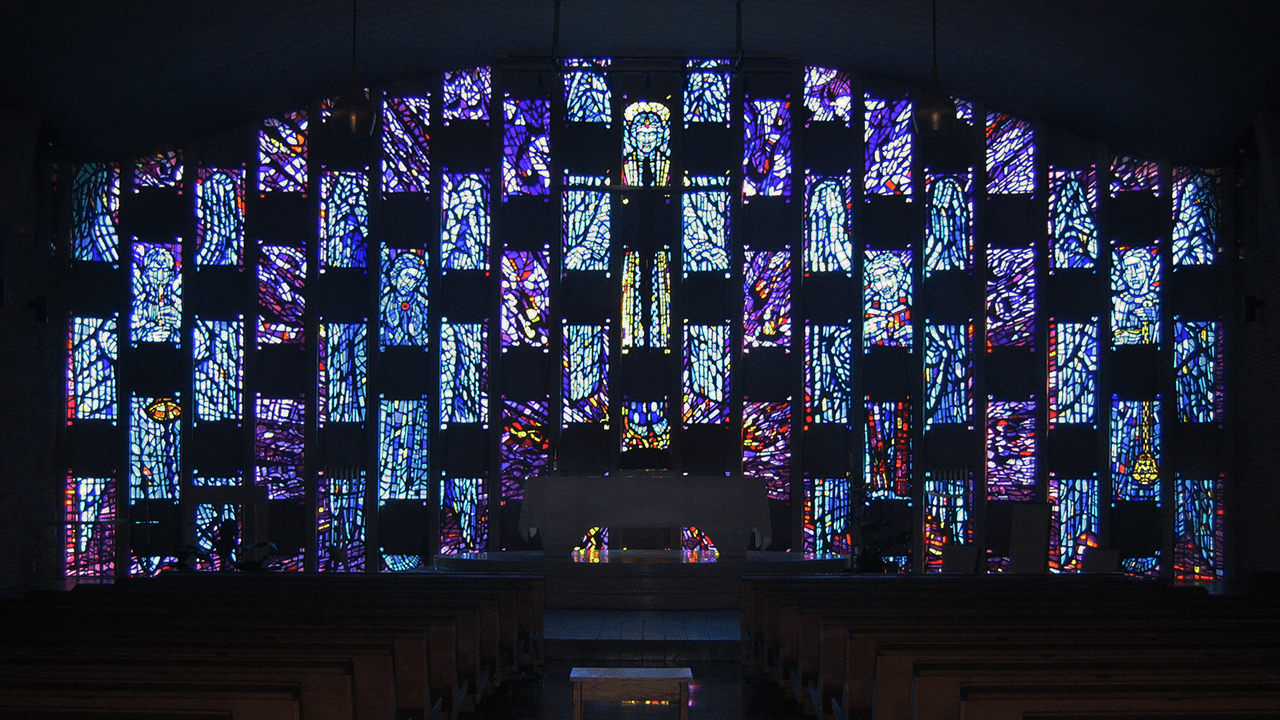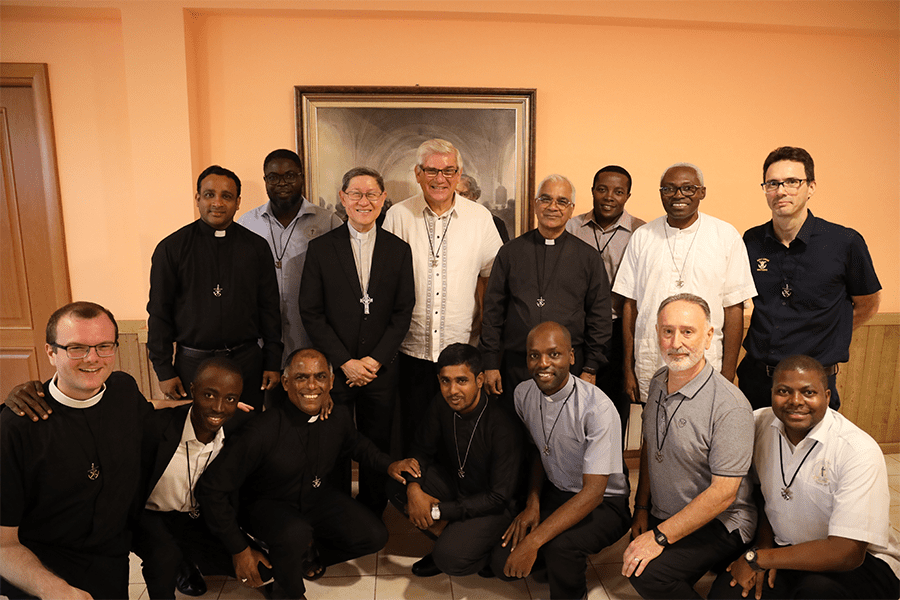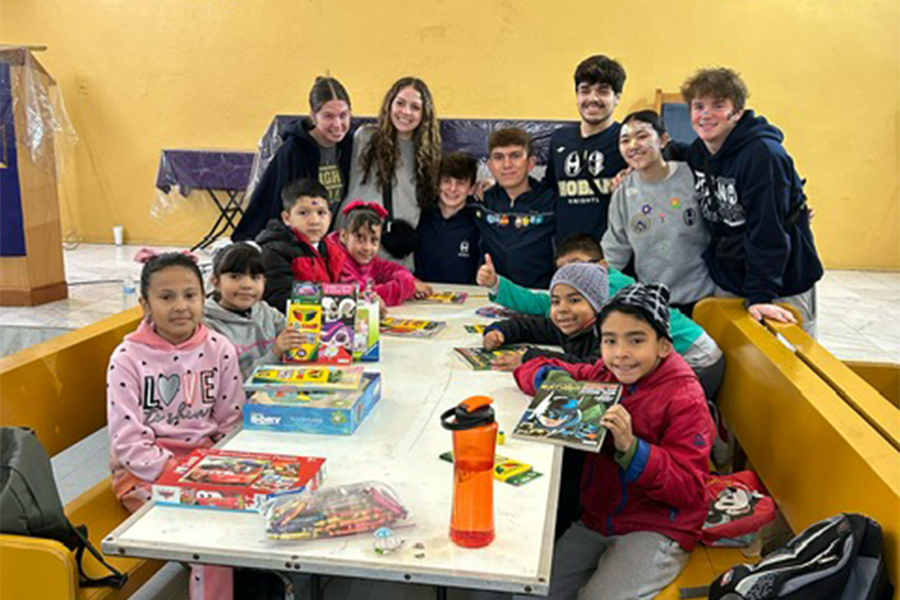For generations, young men being formed to become Holy Cross priests and brothers have done so under the watchful gaze of five angels. Spanning the full height of the windows that make up an entire wall of the chapel of Moreau Seminary, these figures comprise a study in stained glass of several important themes of Holy Cross spirituality. The artist responsible, Fr. Tony Lauck, C.S.C., had drunk deeply from this well, and the windows he envisioned and crafted communicate much of our founder’s vision for our prayer and ministry. In a sermon on meditation, Moreau himself encouraged his congregation to use all of their senses in prayer. When we view that window and view other things in its light, he would invite us to smell the incense burned by one angel and to hear the trumpet blasted by another. When we enter deeply into the scene created by the window, we allow it to play its part in forming us.
Our eyes may go first to the angel in the center. This angel stands atop the tabernacle, which is built into the window. A large crucifix hangs directly in front of him, so this angel is physically linked to the Blessed Sacrament and connected to the crucifix by the direction of his gaze. At the center of Moreau’s spirituality is keeping the cross ever before us and appreciating how the Eucharistic sacrifice re-presents that cross to us. In a letter to religious in Algeria, Moreau invited them to “let Jesus crucified by our mirror, our book.” Keeping our eyes focused on the cross, as that angel models for us, teaches us about ourselves. Moreau tells us that during his darkest days, he went up to the altar and knocked on the door of the tabernacle. His sense of abandonment was something that he could only endure because in that tabernacle was a reminder that Our Lord too had known abandonment in his agony. Ultimately, he tells us that he would have given in to temptation if he had not kept his eyes fixed on the crucifix.
However, Moreau’s entire life was not spent in the chapel. In his Spiritual Exercises, he reminds his religious that “Christianity is above all a practical religion” and that “love of the Savior” should lead us to “zeal for the duties of [our] state.” When we have had a real encounter with Christ’s sacrifice in the tabernacle and the crucifix, the window invites us to broaden our gaze and see the angels on either side of the central figure. One is Raphael, whose name means “God heals.” The other is Gabriel, who is holding a text. Maybe we are to think of the great proclamation he made to Mary? Our Holy Cross Constitutions define Christian ministry as “proclaiming the kingdom and healing the afflicted” (56). In these two angels, we are provided with models and patrons for those two activities.
In our Constitutions, the chapter on prayer follows the chapter on mission. This structure reflects our experience that our ministry leads us to prayer. It is in the work of shepherding the people of God that we come to know what we need to pray for, as regards our own needs as well as for those to and with whom we minister. As our eyes move out from the middle three angels to the two at the sides, we find models of prayer and worship. One angel carries a thurible full of incense, symbolic of the prayers of the faithful rising to heaven. The other has a trumpet with which to praise God. Moreau wrote in his Exercises of the “entire cloud of witnesses [with] but one voice for extolling the benefits, the importance, and the necessity of meditation.” In these outer two angels, we see just two members of that great cloud. They spur us on and make us more ardent in our prayer, knowing that we are not engaged in this entreaty alone, but are joined continually by the heavenly host.
When Moreau wrote of angels, it was often of their role in communicating to the Holy Family, stressing also that family’s ready response to God’s will as revealed by angelic communication. These angels in the Moreau Seminary windows help us to form ourselves as a community founded with the Holy Family as a model, a community centered on the cross and the Eucharist, zealous in mission, and fervent in prayer.
Published on October 11, 2023




